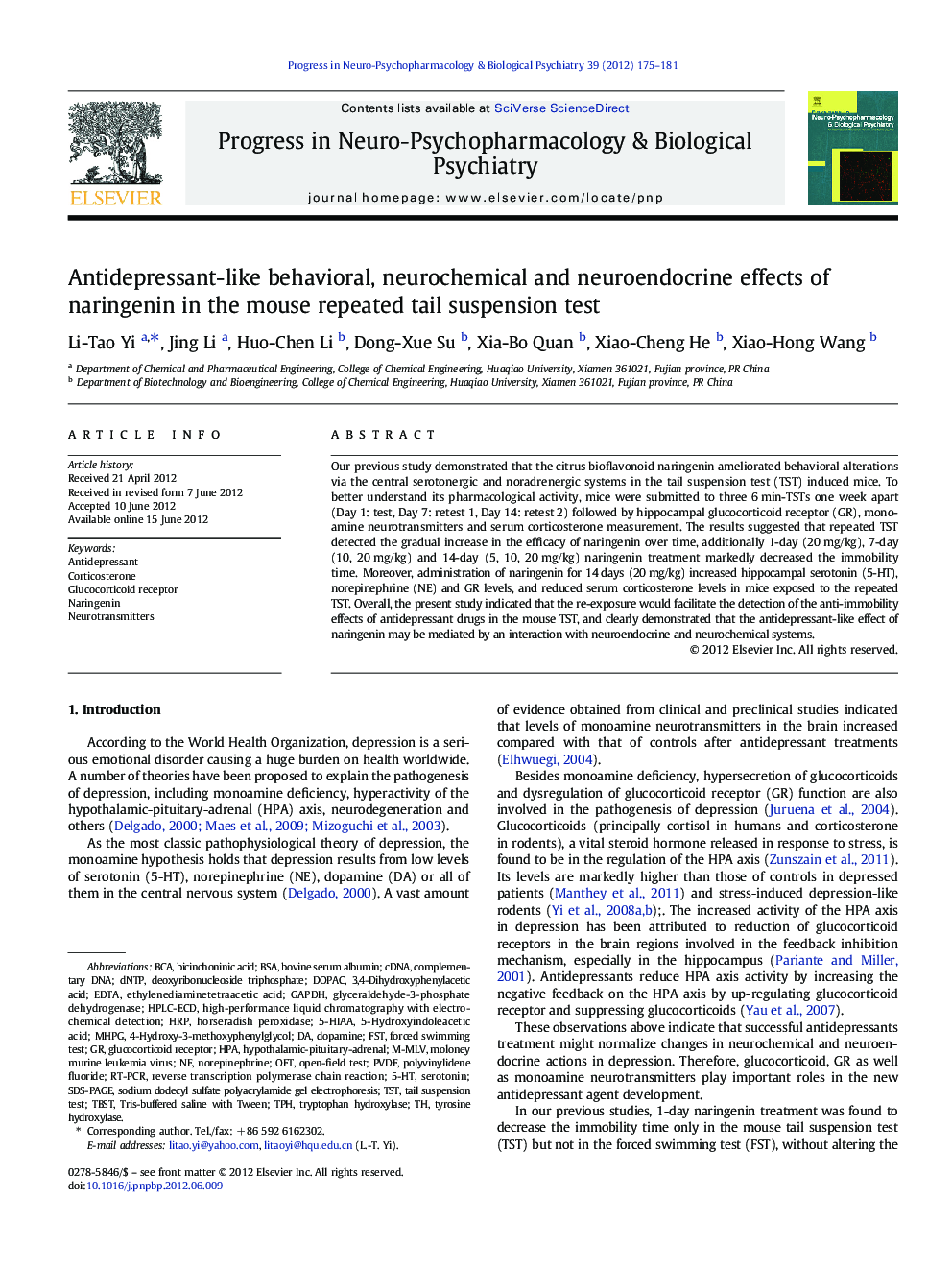| Article ID | Journal | Published Year | Pages | File Type |
|---|---|---|---|---|
| 5844907 | Progress in Neuro-Psychopharmacology and Biological Psychiatry | 2012 | 7 Pages |
Our previous study demonstrated that the citrus bioflavonoid naringenin ameliorated behavioral alterations via the central serotonergic and noradrenergic systems in the tail suspension test (TST) induced mice. To better understand its pharmacological activity, mice were submitted to three 6Â min-TSTs one week apart (Day 1: test, Day 7: retest 1, Day 14: retest 2) followed by hippocampal glucocorticoid receptor (GR), monoamine neurotransmitters and serum corticosterone measurement. The results suggested that repeated TST detected the gradual increase in the efficacy of naringenin over time, additionally 1-day (20Â mg/kg), 7-day (10, 20Â mg/kg) and 14-day (5, 10, 20Â mg/kg) naringenin treatment markedly decreased the immobility time. Moreover, administration of naringenin for 14Â days (20Â mg/kg) increased hippocampal serotonin (5-HT), norepinephrine (NE) and GR levels, and reduced serum corticosterone levels in mice exposed to the repeated TST. Overall, the present study indicated that the re-exposure would facilitate the detection of the anti-immobility effects of antidepressant drugs in the mouse TST, and clearly demonstrated that the antidepressant-like effect of naringenin may be mediated by an interaction with neuroendocrine and neurochemical systems.
⺠Administration of naringenin for 1-day, 7-day and 14-day decreased the immobility time in the repeated TST. ⺠Naringenin increased hippocampal GR and decreased serum corticosterone levels. ⺠Naringenin elevated 5-HT and NE levels, reduced DOPAC levels and 5-HIAA/5-HT ratio in hippocampus.
